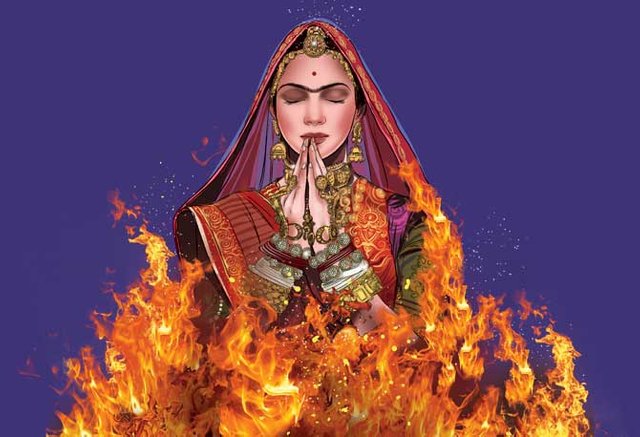STORY OF PADMAVATI-ALAUDDIN KHILJI & RAJPUT
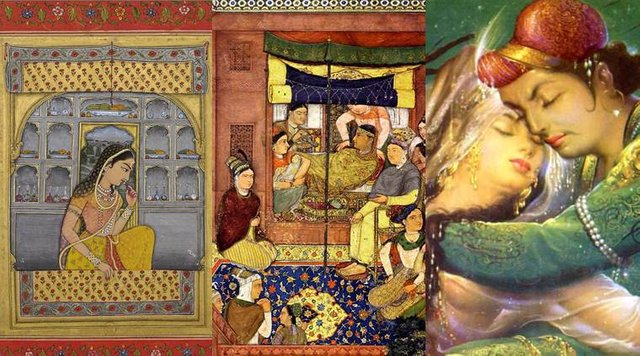
@Padmini, also known as Padmavati, was a legendary 13th–14th century Indian queen (Rani). Several 16th-century texts mention her, of which the earliest source is Padmavat, an epic fictionalized poem written by Malik Muhammad Jayasi in 1540 CE. The Jayasi text describes her story as follows: Padmavati was an exceptionally beautiful princess of the Singhal kingdom (Sri Lanka). Ratan Sen, the Rajput ruler of Chittor Fort, heard about her beauty from a talking parrot named Hiraman. After an adventurous quest, he won her hand in marriage and brought her to Chittor. Alauddin Khalji, the Sultan of Delhi, also heard about her beauty, and laid siege to Chittor to obtain her. Many events occurred during the period of the siege, till the fort was finally taken. Meanwhile, Ratan Sen was killed in a duel with Devpal, the king of Kumbhalner, who was also enamoured with Padmavati's beauty. Before Alauddin Khalji could capture Chittor, Padmavati and her companions committed Jauhar (self-immolation) to protect their honour. After her sacrifice, the Rajput men died fighting on the battlefield.
@Many other written and oral tradition versions of her life exist in Hindu and Jain traditions. These versions differ from the Sufi poet Jayasi's version. For example, Rani Padmani's husband Ratan Sen dies fighting the siege of Alauddin Khalji, and thereafter she leads a jauhar. In these versions, she is characterised as a Hindu Rajput queen, who defended her honour against a Muslim invader. Over the years, she came to be seen as a historical figure, and appeared in several novels, plays, television serials and movies. However, while Khalji's siege of Chittor in 1303 CE is a historical event, many modern historians question the authenticity of the Padmini legends.
ALAUDDIN KHILjI & RANI PADMAVATI
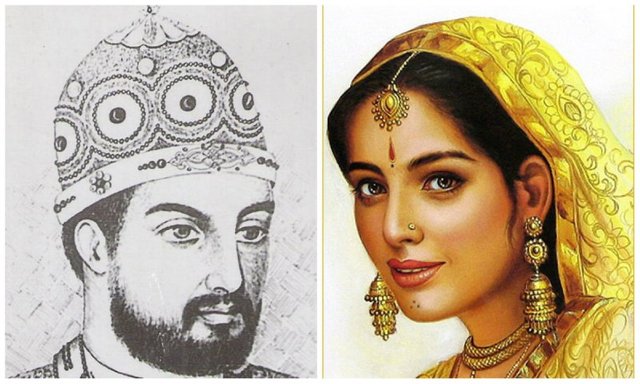
Versions of the legend
@Several 16th-century texts survive that offer varying accounts of Rani Padmini's life.[1] Of these, the earliest is the Awadhi language Padmavat (1540 CE) of the Sufi composer Malik Muhammad Jayasi, likely composed originally in the Persian script.[2] The 14th-century accounts written by Muslim court historians that describe Alauddin Khalji's 1302 CE conquest of Chittorgarh make no mention of this queen.[3] A variety of legends are found in the regional oral tradition from about 1500 or later, remembered and retold in multiple languages, legends which evolved over time.[4] Subsequently, many literary works mentioning her story were produced; these can be divided into four major categories:[5]
Persian and Urdu adaptations
@Between 16th and 19th centuries, at least 12 Persian and Urdu translations or adaptations of Malik Muhammad Jayasi's Padmavat were produced.[6] More Urdu versions appeared in the 20th century, all adhering to Jayasi's love poetry tradition.[4]
Rajput ballads
@In 1589 CE, Hemratan composed Gora Badal Padmini Chaupai, the first Rajput adaption of the legend, presenting it as a "true tale".[7] Between 16th and 18th centuries, more Rajput versions of the Padmavati legend were compiled in present-day Rajasthan, under the patronage of the Rajput chiefs. Unlike Jayasi's theme of courting and marriage, the Rajput adaptions emphasized their honour in defending their kingdom against Alauddin Khalji.[6]
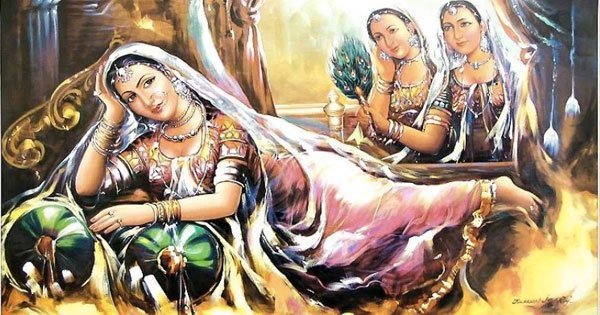
James Tod's version
@During 1829-32, James Tod included a colonial re-telling of the legend in his Annals and Antiquities of Rajas'han. His version was based on the information compiled from the oral and textual traditions of writers employed by the Rajput chiefs.[6]
Bengali adaptions
@From late 19th century onward, several Bengali versions of legend were produced, when James Tod's work reached Calcutta, the capital of British India. These Bengali narratives portrayed Padmavati as a Hindu queen who immolated herself to protect her honour against a Muslim invader.[6]
@In addition to these various literary accounts, there are numerous narratives of the queen's life in the memories of regional communities, preserved through verbal transmission.[8] The oral legends and the literary accounts share the same characters and general plot, but diverge in the specifics and how they express the details. The oral versions narrate the social group's perspective while the early literary versions narrate the author's court-centric context.[8] According to Ramya Sreenivasan, the oral and written legends about Rani Padmini likely fed each other, each version of her life affected by the sensitivities of the audience or the patron, with Muslim versions narrating the conquest of Chitor by Delhi Sultanate under Alauddin Khalji, while the Hindu and Jain versions narrating the local resistance to the sultan of Delhi exemplified in the life of Padmini.[9]
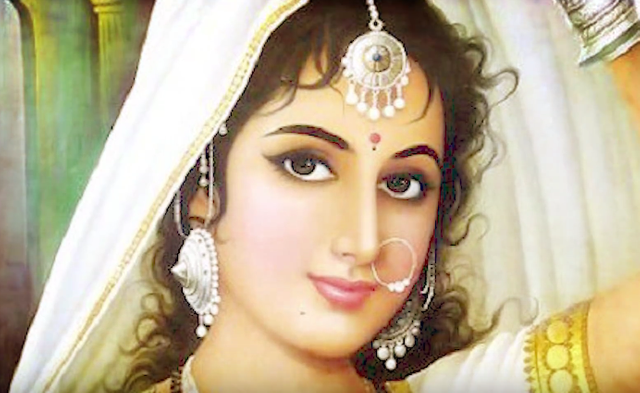
Literary accounts
Malik Muhammad Jayasi's Padmavat (1540 CE)
Main article: Padmavat
@In the Jayasi version, states Ramya Sreenivasan, Padmavati is described as the daughter of Gandharvsen, the king of the island kingdom of Sinhala (Singhal kingdom, Sri Lanka).[10] A parrot tells Chittor's king Ratansen of Padmavati and her beauty. Ratansen is so moved by the parrot's description that he renounces his kingdom, becomes an ascetic, follows the parrot as the bird leads him across seven seas to the island kingdom.[11] There he meets Padmavati, overcomes obstacles and risks his life to win her. He succeeds, marries her and brings his wife to Chittor where he becomes king again. Ratnasen expels a Brahmin scholar for misconduct, who then reaches Sultan Alauddin and tells him about the beautiful Padmavati.[11] The sultan lusts for Padmavati, and invades Chittor in his quest for her. Ratnasen, meanwhile, dies in another battle with a rival Rajput ruler.[11] Padmavati immolates herself. Alauddin thus conquers Chitor for the Islamic state, but Alauddin fails in his personal quest.[12]
@This earliest known literary version is attributed to Jayasi, whose year of birth and death are unclear.[13] He lived during the rule of Babur, the Islamic emperor who started the Mughal Empire after ending the Delhi Sultanate. Jayasi's compositions spread in the Sufi tradition across the Indian subcontinent.[14] Variants derived from Jayasi's work on Padmavati were composed between the 16th and 19th centuries and these manuscripts exist in the Sufi tradition.[15] In one, princess Padmavati became close friends with a talking parrot named Hiraman. She and the parrot together studied the Vedas – the Hindu scriptures.[16] Her father resented the parrot's closeness to his daughter, and ordered the bird to be killed. The panicked parrot bade goodbye to the princess and flew away to save its life. It was trapped by a bird catcher, and sold to a Brahmin. The Brahmin bought it to Chittor, where the local king Ratan Sen purchased it, impressed by its ability to talk.[16]
@The parrot greatly praised Padmavati's beauty in front of Ratan Sen, who became determined to marry Padmavati. He leaves his kingdom as a Nath yogi. Guided by the parrot and accompanied by his 16,000 followers, Ratan Sen reached Singhal after crossing the seven seas. There, he commenced austerities in a temple to seek Padmavati. Meanwhile, Padmavati came to the temple, informed by the parrot, but quickly returned to her palace without meeting Ratan Sen. Once she reached the palace, she started longing for Ratan Sen.[16]
